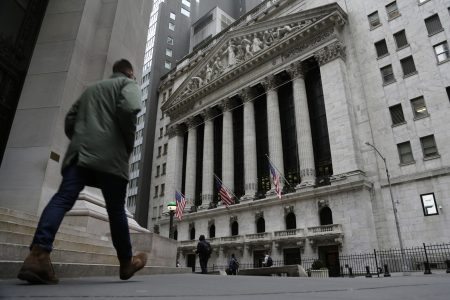Swedish Upswings on Wall Street: A Six-Paragraph Summary (2000 words)
Sweden, a nation renowned for its social welfare model and robust economy, has consistently fostered a strong presence on Wall Street, showcasing a fascinating interplay of entrepreneurial spirit, financial innovation, and strategic investments. This presence, marked by periodic upswings, reflects not only the success of individual Swedish companies and investors but also the country’s broader economic health and its ability to adapt to the ever-evolving global financial landscape. These upswings are characterized by increased listings of Swedish companies on US exchanges, heightened investment activity by Swedish firms in American markets, and rising influence of Swedish financial professionals in key Wall Street institutions. Understanding these periods of growth requires analyzing a confluence of factors, including macroeconomic conditions in both Sweden and the US, industry-specific trends, advancements in technology, and the evolving regulatory environment.
One of the most prominent drivers behind Swedish upswings on Wall Street is the inherent innovativeness of the Swedish business ecosystem. Sweden boasts a strong track record in fostering startups, particularly in technology and biotech sectors, which often seek access to the deeper capital markets of the US to fuel their growth. Companies like Spotify and Skype, both originating from Sweden, exemplify this trend. Their successful listings on US exchanges not only provided them with the necessary capital to expand their operations but also significantly raised Sweden’s profile within the global financial community. These successes, in turn, create a positive feedback loop, attracting further investment and paving the way for other Swedish companies to venture into the American market. Furthermore, Swedish companies often bring a unique approach to business, characterized by a strong emphasis on sustainability, social responsibility, and employee well-being. These values resonate with a growing segment of US investors, further contributing to the appeal of Swedish companies.
Beyond individual company successes, Swedish institutional investors have also played a significant role in driving upswings on Wall Street. Swedish pension funds, known for their sophisticated investment strategies and long-term outlook, have increasingly allocated capital to US markets, contributing to market liquidity and supporting the growth of American businesses. These institutional investors are attracted by the depth and breadth of the US market, offering diverse investment opportunities across various sectors. Moreover, the relative stability and transparency of the US regulatory framework provide a sense of security for these long-term investors. The presence of these prominent Swedish institutional investors on Wall Street not only strengthens financial ties between the two countries but also fosters a deeper understanding of each other’s market dynamics.
Macroeconomic conditions in both Sweden and the US also play a crucial role in shaping Swedish upswings on Wall Street. Periods of strong economic growth and favorable interest rate differentials between the two countries often incentivize increased investment flows. A strong Swedish krona, for example, can make US assets more attractive to Swedish investors, while a robust US economy can attract Swedish companies seeking to expand their market reach. Conversely, periods of economic downturn or uncertainty can dampen investor enthusiasm and lead to a decline in cross-border investment activity. Therefore, understanding the interplay of macroeconomic factors is essential in analyzing the timing and magnitude of Swedish upswings.
Another critical factor contributing to Swedish successes on Wall Street is the strength of the Swedish education system and its focus on developing a highly skilled workforce. Sweden has consistently ranked high in global education indices, particularly in areas such as science, technology, engineering, and mathematics (STEM). This emphasis on education has created a pool of talented individuals who are well-equipped to navigate the complexities of global finance. Many Swedish professionals have pursued careers on Wall Street, contributing their expertise to leading financial institutions and further strengthening the Swedish presence in the US financial sector. This talent pipeline further solidifies the long-term potential for continued Swedish influence on Wall Street.
Finally, the evolving regulatory landscape also plays a significant role in shaping the dynamics of Swedish engagement with Wall Street. Changes in financial regulations, both in the US and Sweden, can create both opportunities and challenges for cross-border investment. For instance, regulatory harmonization efforts can facilitate easier access to markets and reduce compliance costs, while diverging regulations can create barriers to entry. Therefore, Swedish companies and investors must stay abreast of regulatory developments and adapt their strategies accordingly to continue thriving in the dynamic environment of Wall Street. This adaptability, coupled with the aforementioned factors of innovation, institutional investment, macroeconomic conditions, and a skilled workforce, positions Sweden for continued success and further upswings on the global financial stage.














